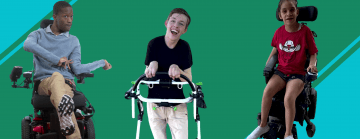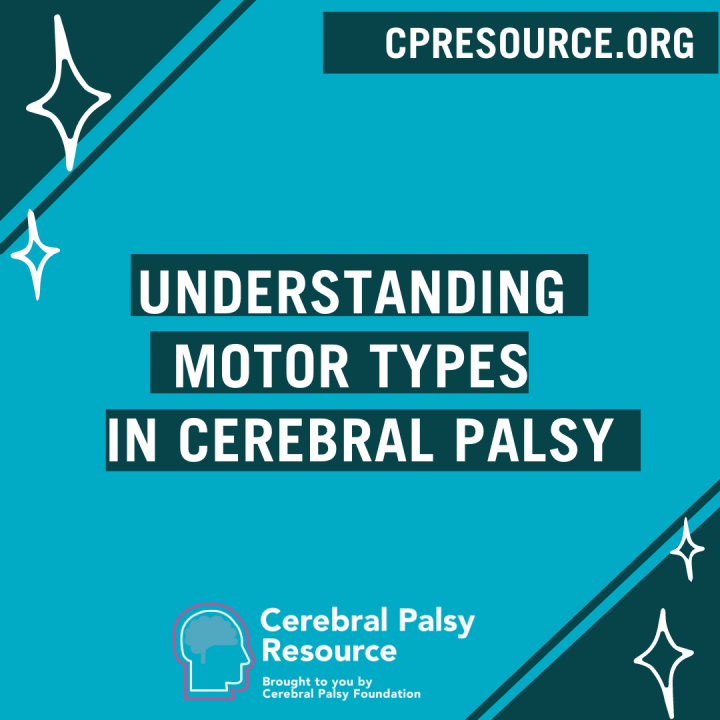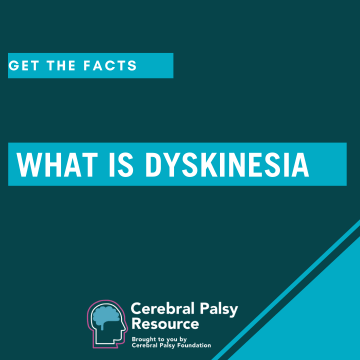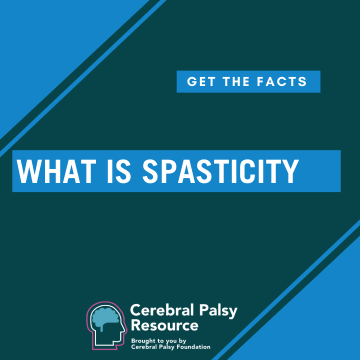

In this section, we are organizing content according to how cerebral palsy impacts the way someone moves, also known as Motor Types.
Cerebral Palsy is a broad diagnosis that impacts everyone differently. Some individuals walk independently or may use a cane or a crutch for stability and balance, while others use powered mobility or attendant assistance to get around. The reasons why individuals have different levels of assistance needs varies depending on their body parts that are impacted, the way their movements affected, and the severity of the impact.
The main motor types seen in cerebral palsy are Spastic, Dyskinetic, Ataxic, Hypotonic and Mixed motor types.
The specific motor types present in CP are determined by the extent, type, and location of the brain injury.
SPASTIC CEREBRAL PALSY
Spastic CP is the most common type. People will experience increased muscle tone and their movements may appear stiff or awkward. Different parts of the body can be affected:
- Spastic hemiplegia/hemiparesis typically affects the arm, hand, and leg on one side of the body.
- Spastic diplegia/diparesis involves muscle stiffness that is predominantly in the legs. The arms maybe affected to a lesser extent
- Spastic quadriplegia/quadriparesis is the most severe form of CP. It is caused by widespread damage tothe brain or significant brain malformations.
DYSKINETIC CEREBRAL PALSY
Dyskinetic motor patterns are characterized by slow and uncontrollable writhing or jerky movements of the hands, feet, arms, or legs. These motor types include:
- Athetosis
- Chorea/choreoathetoid
- Dystonia
ATAXIC CEREBRAL PALSY
Ataxia affects balance and depth perception. Children with ataxia will often have poor coordination and walk unsteadily with a wide-based gait.
Hypotonic Cerebral Palsy
Hypotonia means that a child has abnormally low muscle tone. Sometimes the child may be described as having weakness or floppy.
MIXED TYPES
Mixed types of CP refer to symptoms that don’t correspond to any single type of CP but are a mix of types. For example, a child with mixed CP may have some muscles that are too tight and others that are too relaxed.
-

Dyskinetic Cerebral Palsy People who have dyskinetic cerebral palsy experience involuntary movements that are difficult to control. These movements can be slow, twisting and writhing, or rapid and jerky, and can impact movement in the hands, arms, feet, legs and even the face or tongue. -

Spastic Cerebral Palsy Spastic cerebral palsy is the most common type of CP. People will experience increased muscle tone and their movements may appear stiff or awkward. -

Mixed Types Mixed types of CP refer to symptoms that don’t correspond to any single type of CP but are a mix of types. For example, a child with mixed CP may have some muscles that are too tight and others that are too relaxed.
We now know that most people have more than one motor type, meaning that they have spasticity and some sort of dyskinesia, usually dystonia, and people who have dystonia oftentimes can have some degree of chorea or athetosis as well.



